-
 Bitcoin
Bitcoin $106,754.6083
1.33% -
 Ethereum
Ethereum $2,625.8249
3.80% -
 Tether USDt
Tether USDt $1.0001
-0.03% -
 XRP
XRP $2.1891
1.67% -
 BNB
BNB $654.5220
0.66% -
 Solana
Solana $156.9428
7.28% -
 USDC
USDC $0.9998
0.00% -
 Dogecoin
Dogecoin $0.1780
1.14% -
 TRON
TRON $0.2706
-0.16% -
 Cardano
Cardano $0.6470
2.77% -
 Hyperliquid
Hyperliquid $44.6467
10.24% -
 Sui
Sui $3.1128
3.86% -
 Bitcoin Cash
Bitcoin Cash $455.7646
3.00% -
 Chainlink
Chainlink $13.6858
4.08% -
 UNUS SED LEO
UNUS SED LEO $9.2682
0.21% -
 Avalanche
Avalanche $19.7433
3.79% -
 Stellar
Stellar $0.2616
1.64% -
 Toncoin
Toncoin $3.0222
2.19% -
 Shiba Inu
Shiba Inu $0.0...01220
1.49% -
 Hedera
Hedera $0.1580
2.75% -
 Litecoin
Litecoin $87.4964
2.29% -
 Polkadot
Polkadot $3.8958
3.05% -
 Ethena USDe
Ethena USDe $1.0000
-0.04% -
 Monero
Monero $317.2263
0.26% -
 Bitget Token
Bitget Token $4.5985
1.68% -
 Dai
Dai $0.9999
0.00% -
 Pepe
Pepe $0.0...01140
2.44% -
 Uniswap
Uniswap $7.6065
5.29% -
 Pi
Pi $0.6042
-2.00% -
 Aave
Aave $289.6343
6.02%
What does the steep rise of the ADX curve in the DMI indicator indicate?
A steep rise in the ADX curve signals intensifying trend strength, but traders must confirm direction using +DI and -DI to avoid false assumptions in volatile crypto markets.
Jun 14, 2025 at 02:28 pm
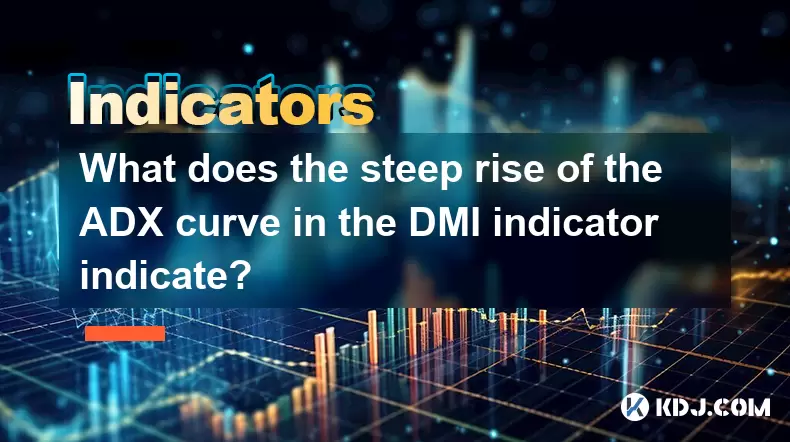
Understanding the DMI Indicator and Its Components
The Directional Movement Index (DMI) is a technical analysis tool used to determine the strength and direction of a trend in financial markets, including cryptocurrency trading. It consists of three primary components: +DI (Positive Directional Indicator), -DI (Negative Directional Indicator), and ADX (Average Directional Index). The ADX curve specifically measures the strength of a trend, whether it's bullish or bearish.
In cryptocurrency trading, where volatility is high and trends can shift rapidly, understanding the ADX curve’s behavior becomes crucial for traders aiming to capture directional moves effectively. A steep rise in the ADX curve signals an intensifying trend, but interpreting this correctly requires deeper exploration of its implications.
What Does a Steep Rise in the ADX Curve Indicate?
A steep increase in the ADX line typically indicates that the market is entering a strong trending phase. This does not imply direction — whether the price is going up or down — but rather the momentum behind the movement. In crypto markets, where sudden surges and drops are common, a sharp ADX ascent can be seen during breakout scenarios or after extended consolidation periods.
When the ADX rises above 25, it suggests that a clear trend is forming. If it climbs beyond 40 or 50, it may indicate an extremely strong trend. However, traders must also consider the +DI and -DI lines to determine if the trend is bullish or bearish. A steep ADX curve without confirmation from these directional indicators might lead to false assumptions about market direction.
How to Interpret the ADX Curve in Relation to DI Lines
To fully understand what a rising ADX means, one must analyze its relationship with the +DI and -DI lines:
- +DI crossing above -DI while ADX is rising indicates a strengthening bullish trend.
- -DI crossing above +DI alongside a rising ADX implies a strengthening bearish trend.
- If both +DI and -DI are close together despite a rising ADX, it could signal increased volatility without a clear directional bias.
For example, during a strong rally in Bitcoin or Ethereum, you might observe the ADX curve climbing sharply while the +DI line remains significantly above the -DI line. This confirms the presence of a powerful uptrend. Conversely, in a fast dump scenario, the ADX will spike upwards as the -DI surpasses the +DI.
Practical Use Cases in Cryptocurrency Trading
Cryptocurrency traders often use the DMI indicator to confirm potential trades identified through other tools like moving averages or volume charts. A steep ADX rise can serve as a confirmation signal for trend-following strategies.
Here’s how a trader might interpret and act upon such a signal:
- Observe that the ADX line has crossed above 25 and is rising sharply.
- Check if either +DI or -DI has taken dominance.
- If +DI is above -DI and rising, look for opportunities to enter long positions on pullbacks.
- If -DI is above +DI and ADX continues to climb, consider shorting during rallies.
- Monitor candlestick patterns or support/resistance levels to time entries more precisely.
It's important to note that relying solely on the DMI without incorporating other confirming signals can lead to misinterpretations, especially in sideways or choppy markets where false breakouts are frequent.
Misinterpretations and Common Pitfalls
One of the most common mistakes made by novice traders is assuming that a rising ADX automatically means a profitable trend is underway. That’s not always the case. A steep ADX curve can occur even when the trend is nearing exhaustion, particularly in overbought or oversold conditions.
Additionally:
- A steep ADX can appear during a whipsaw — a rapid back-and-forth movement — which may result in premature exits or entries.
- Traders might misinterpret a rising ADX during a reversal phase, leading them to chase a fading trend.
- Failing to combine ADX with volume data or price action analysis can lead to poor trade decisions.
Therefore, it’s essential to treat the ADX as a trend strength filter rather than a standalone trading signal. Using it in conjunction with tools like RSI, MACD, or Bollinger Bands can help reduce false positives and improve decision-making accuracy.
Frequently Asked Questions
Q: Can the ADX value go above 100?
Yes, technically, the ADX can exceed 100, although this is rare. Typically, values above 50 are considered indicative of very strong trends. However, extreme readings should be evaluated carefully in context with price action and other indicators.
Q: Is a rising ADX always a good sign for trend traders?
Not necessarily. A rising ADX indicates trend strength, but it doesn’t guarantee profitability. Entering a trade too late in a strong trend can result in diminished returns or increased risk due to potential reversals.
Q: How frequently should I check the ADX in my trading strategy?
This depends on your trading timeframe. Day traders may monitor it every few minutes, while swing traders might review it hourly or daily. Consistency in monitoring helps identify shifts in trend strength before they become visually apparent on price charts.
Q: What timeframes work best with the DMI and ADX indicator?
The DMI works well across various timeframes, but it tends to provide more reliable signals on higher timeframes like 1-hour, 4-hour, or daily charts. Shorter timeframes may produce more noise, increasing the likelihood of false signals.
Disclaimer:info@kdj.com
The information provided is not trading advice. kdj.com does not assume any responsibility for any investments made based on the information provided in this article. Cryptocurrencies are highly volatile and it is highly recommended that you invest with caution after thorough research!
If you believe that the content used on this website infringes your copyright, please contact us immediately (info@kdj.com) and we will delete it promptly.
- 2025-W Uncirculated American Gold Eagle and Dr. Vera Rubin Quarter Mark New Products
- 2025-06-13 06:25:13
- Ruvi AI (RVU) Leverages Blockchain and Artificial Intelligence to Disrupt Marketing, Entertainment, and Finance
- 2025-06-13 07:05:12
- H100 Group AB Raises 101 Million SEK (Approximately $10.6 Million) to Bolster Bitcoin Reserves
- 2025-06-13 06:25:13
- Galaxy Digital CEO Mike Novogratz Says Bitcoin Will Replace Gold and Go to $1,000,000
- 2025-06-13 06:45:13
- Trust Wallet Token (TWT) Price Drops 5.7% as RWA Integration Plans Ignite Excitement
- 2025-06-13 06:45:13
- Ethereum (ETH) Is in the Second Phase of a Three-Stage Market Cycle
- 2025-06-13 07:25:13
Related knowledge
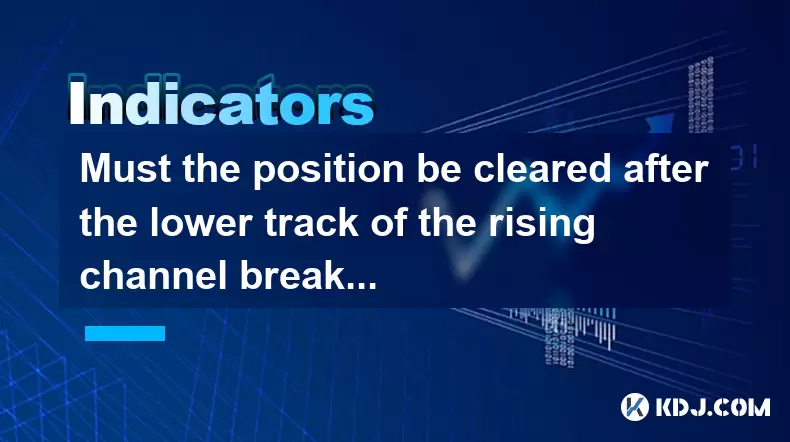
Must the position be cleared after the lower track of the rising channel breaks?
Jun 16,2025 at 04:43pm
Understanding the Rising Channel BreakdownIn technical analysis, a rising channel is formed by drawing two parallel trendlines: one connecting higher lows and another connecting higher highs. When the price breaks below the lower trendline of this channel, it signals a potential reversal or at least a pause in the uptrend. This event often triggers trad...
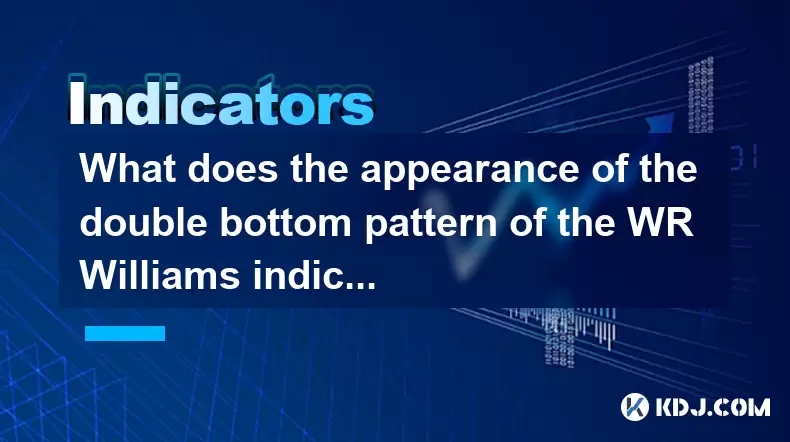
What does the appearance of the double bottom pattern of the WR Williams indicator mean? Can I buy the bottom?
Jun 16,2025 at 01:01pm
Understanding the WR Williams IndicatorThe WR (Williams %R) is a momentum oscillator used in technical analysis to identify overbought and oversold levels in trading. Developed by Larry Williams, this indicator oscillates between 0 and -100. A reading above -20 typically indicates overbought conditions, while a reading below -80 signals oversold territo...
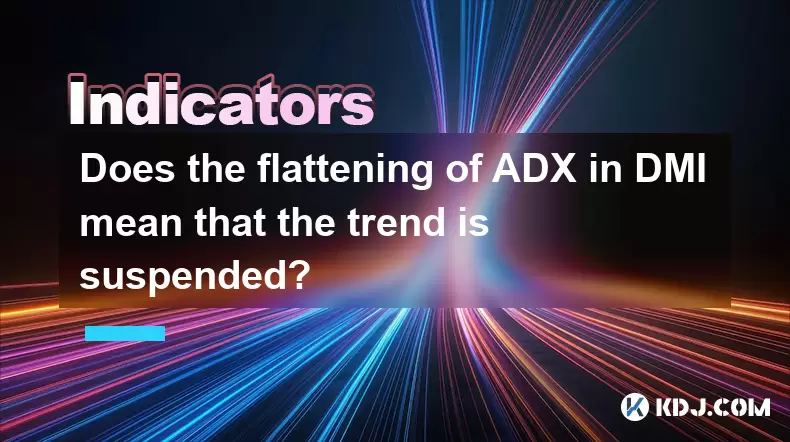
Does the flattening of ADX in DMI mean that the trend is suspended?
Jun 16,2025 at 02:07pm
Understanding the ADX and DMI IndicatorsThe ADX (Average Directional Index) is part of the DMI (Directional Movement Index) system developed by J. Welles Wilder to measure trend strength. The DMI itself consists of three components: the +DI (Positive Directional Indicator), -DI (Negative Directional Indicator), and the ADX line. While the +DI and -DI he...
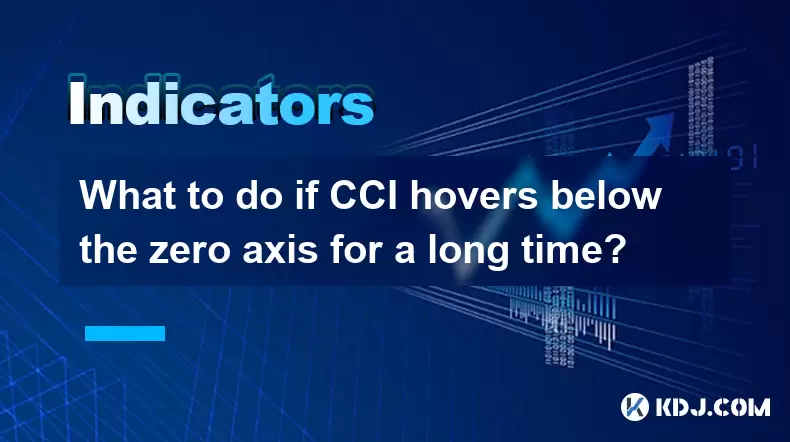
What to do if CCI hovers below the zero axis for a long time?
Jun 16,2025 at 04:05pm
Understanding the CCI Indicator in Cryptocurrency TradingThe Commodity Channel Index (CCI) is a versatile technical indicator used extensively in cryptocurrency trading to identify overbought or oversold conditions, as well as potential trend reversals. When the CCI hovers below the zero axis for an extended period, it can signal a prolonged bearish sen...
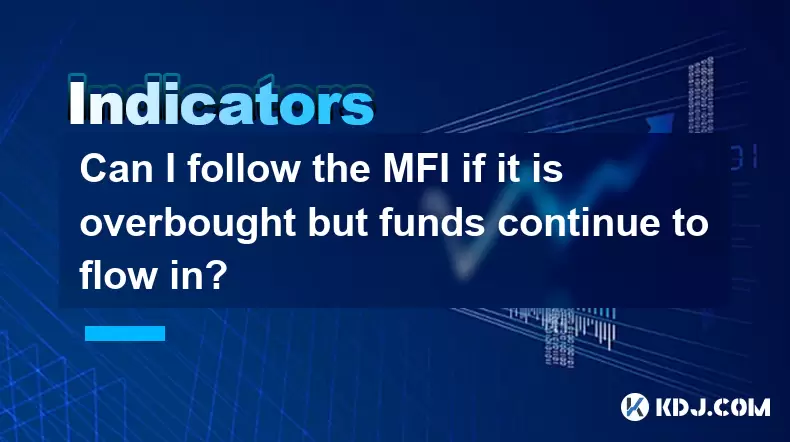
Can I follow the MFI if it is overbought but funds continue to flow in?
Jun 16,2025 at 03:07pm
Understanding the MFI Indicator in Cryptocurrency TradingThe Money Flow Index (MFI) is a technical indicator used extensively in cryptocurrency trading to measure buying and selling pressure. It combines price and volume data to assess overbought or oversold conditions. Typically, an MFI reading above 80 indicates overbought territory, while below 20 su...
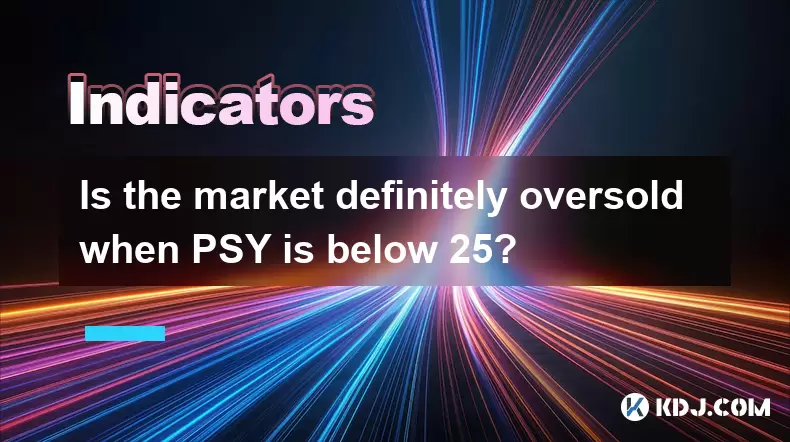
Is the market definitely oversold when PSY is below 25?
Jun 16,2025 at 03:43pm
Understanding the Psychological Line (PSY) IndicatorThe Psychological Line (PSY) is a momentum oscillator used in technical analysis to gauge investor sentiment. It measures the ratio of days when the price closes higher versus the number of days it closes lower over a specific period, typically 12 or 25 trading days. The resulting value ranges from 0 t...

Must the position be cleared after the lower track of the rising channel breaks?
Jun 16,2025 at 04:43pm
Understanding the Rising Channel BreakdownIn technical analysis, a rising channel is formed by drawing two parallel trendlines: one connecting higher lows and another connecting higher highs. When the price breaks below the lower trendline of this channel, it signals a potential reversal or at least a pause in the uptrend. This event often triggers trad...

What does the appearance of the double bottom pattern of the WR Williams indicator mean? Can I buy the bottom?
Jun 16,2025 at 01:01pm
Understanding the WR Williams IndicatorThe WR (Williams %R) is a momentum oscillator used in technical analysis to identify overbought and oversold levels in trading. Developed by Larry Williams, this indicator oscillates between 0 and -100. A reading above -20 typically indicates overbought conditions, while a reading below -80 signals oversold territo...

Does the flattening of ADX in DMI mean that the trend is suspended?
Jun 16,2025 at 02:07pm
Understanding the ADX and DMI IndicatorsThe ADX (Average Directional Index) is part of the DMI (Directional Movement Index) system developed by J. Welles Wilder to measure trend strength. The DMI itself consists of three components: the +DI (Positive Directional Indicator), -DI (Negative Directional Indicator), and the ADX line. While the +DI and -DI he...

What to do if CCI hovers below the zero axis for a long time?
Jun 16,2025 at 04:05pm
Understanding the CCI Indicator in Cryptocurrency TradingThe Commodity Channel Index (CCI) is a versatile technical indicator used extensively in cryptocurrency trading to identify overbought or oversold conditions, as well as potential trend reversals. When the CCI hovers below the zero axis for an extended period, it can signal a prolonged bearish sen...

Can I follow the MFI if it is overbought but funds continue to flow in?
Jun 16,2025 at 03:07pm
Understanding the MFI Indicator in Cryptocurrency TradingThe Money Flow Index (MFI) is a technical indicator used extensively in cryptocurrency trading to measure buying and selling pressure. It combines price and volume data to assess overbought or oversold conditions. Typically, an MFI reading above 80 indicates overbought territory, while below 20 su...

Is the market definitely oversold when PSY is below 25?
Jun 16,2025 at 03:43pm
Understanding the Psychological Line (PSY) IndicatorThe Psychological Line (PSY) is a momentum oscillator used in technical analysis to gauge investor sentiment. It measures the ratio of days when the price closes higher versus the number of days it closes lower over a specific period, typically 12 or 25 trading days. The resulting value ranges from 0 t...
See all articles

























































































